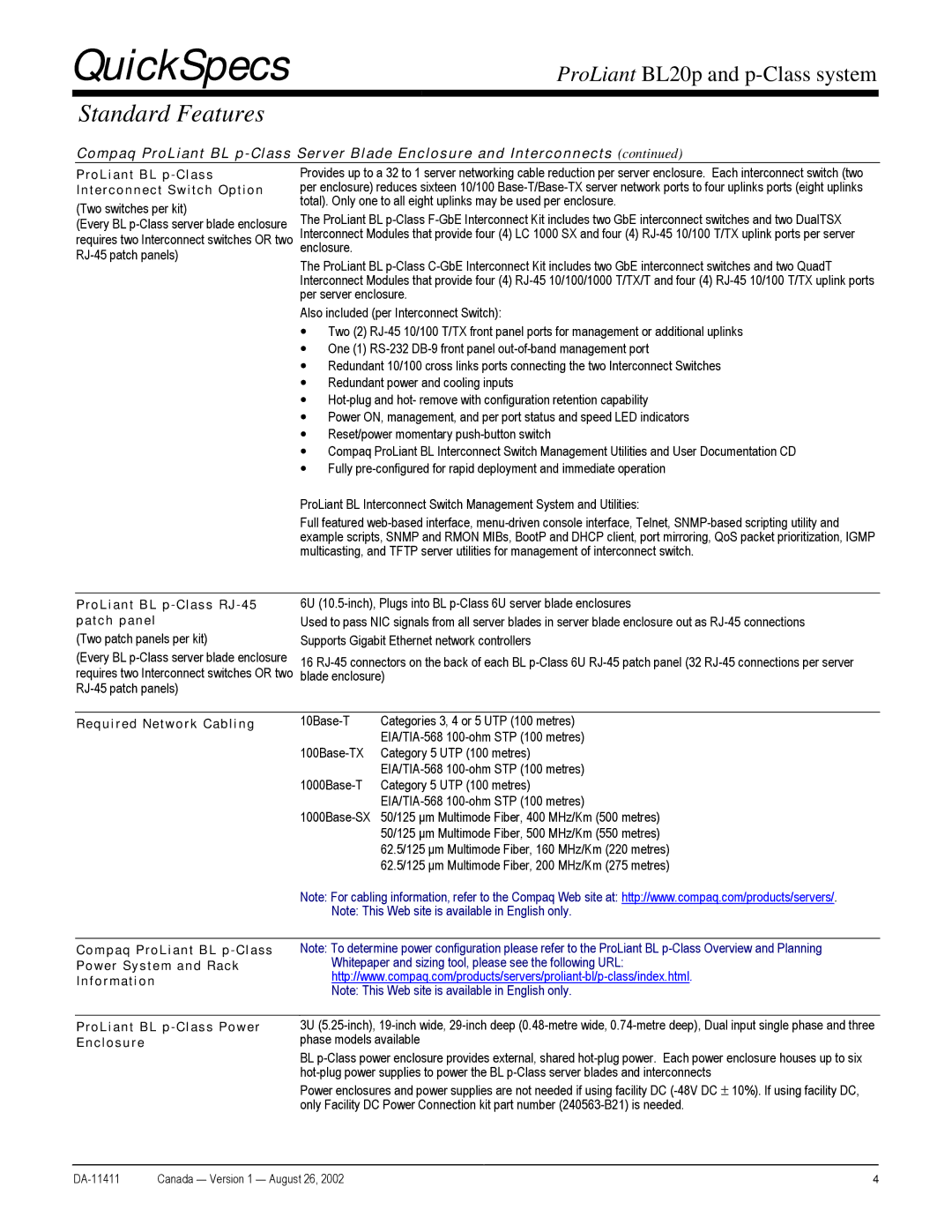p-Class specifications
The Compaq p-Class is a notable line of server systems that was introduced by Compaq in the late 1990s. Designed primarily for deployment in enterprise environments, the p-Class machines were built to address the growing demands for robust computing power and reliability. Targeting both internet and enterprise applications, these servers offered a compelling combination of performance, scalability, and manageability.One of the remarkable features of the p-Class systems is their modular design. This architecture allows for easy upgrades and maintenance, which is a significant advantage for IT administrators looking to optimize their server investments over time. Users can swap out components such as processors, memory, and storage drives without extensive downtime or complex procedures.
The p-Class servers also featured advanced hot-plug capabilities, enabling the replacement of failed components without powering down the system. This is particularly crucial in mission-critical environments where uptime is paramount. Additionally, p-Class systems included redundancy in critical components, such as power supplies and cooling fans, to ensure maximum availability.
In terms of technology, the p-Class utilized powerful Intel processors, which provided a robust performance that was competitive for its time. The servers also supported a wide range of operating systems, including various flavors of Windows NT, Unix, and Linux, making them versatile for different enterprise applications.
A key characteristic of the p-Class was its ability to support a highly scalable architecture. Organizations could start with a smaller configuration and expand as their needs grew. This scalability, combined with Compaq's proactive management tools, allowed for effective monitoring and maintenance of server health.
Security was another focus area for the p-Class series, with features designed to help protect sensitive data and maintain integrity. Enhanced security protocols and management capabilities allowed IT staff to implement and monitor strict access controls.
The Compaq p-Class servers made a significant impact in the late '90s and early 2000s as businesses were rapidly evolving to meet the demands of digital transformation. With their robust features, modular design, and focus on reliability and performance, the p-Class servers helped lay the groundwork for modern enterprise server infrastructure, showcasing Compaq's commitment to innovation in a competitive market.

